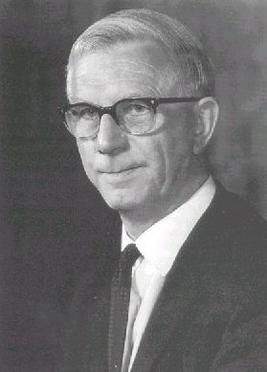Charles Oatley facts for kids
Quick facts for kids
Sir
Charles William Oatley
|
|
|---|---|

Charles William Oatley (1904-1996)
|
|
| Born | 14 February 1904 |
| Died | 11 March 1996 (aged 92) |
| Nationality | British |
| Alma mater | St. John's College, Cambridge |
| Known for | Scanning electron microscope |
| Awards | Duddell Medal (1969) Royal Medal (1969) Faraday Medal (1970) Mullard Award (1973) Potts Medal (1989) |
| Scientific career | |
| Fields | Physicist and Electronic engineer |
| Institutions | Radio Accessories English Electric Valve Company King's College London ADRDE University of Cambridge |
| Academic advisors | Edward Victor Appleton |
| Doctoral students | Haroon Ahmed Alec Broers Thomas Everhart Colin J. R. Sheppard |
| Influences | John D. Cockcroft |
| Influenced | Constance Tipper |
Sir Charles William Oatley was a brilliant British scientist. He was an expert in electrical engineering and a physicist. He is most famous for helping to create one of the first working scanning electron microscopes. This amazing invention lets us see tiny things in incredible detail! He was also a very important professor at the University of Cambridge.
Contents
Who Was Sir Charles Oatley?
Sir Charles William Oatley was born on Valentine's Day, February 14, 1904. His birthplace was Frome, a town in Somerset, England. He grew up to become a highly respected engineer and professor.
Early Life and Education
Charles Oatley went to Bedford Modern School when he was younger. Later, he studied at St. John's College, Cambridge. After his studies, he taught at King's College London for 12 years. He then became a professor at the University of Cambridge in 1960.
Amazing Inventions: The Scanning Electron Microscope
Sir Charles Oatley is best known for his work on the scanning electron microscope (SEM). This special microscope uses a beam of electrons. It creates incredibly detailed images of tiny objects. Imagine seeing the surface of a dust mite or a tiny insect's eye up close!
He worked with his students to improve this technology. They made big steps in developing the SEM. Their hard work helped make the SEM a useful tool. Today, SEMs are used in many fields. They help scientists study materials, biology, and even tiny computer parts.
His Legacy and Students
Sir Charles Oatley believed in taking on challenging projects. He thought it was important for students to build and improve complex machines. This approach helped his students learn a lot. Many of his students became very successful scientists and leaders.
Some of his famous students include:
- Thomas Everhart, who later became the president of Caltech.
- Alec Broers, who became the Vice-Chancellor of the University of Cambridge. He also led the Royal Academy of Engineering.
- Haroon Ahmed, who became a professor of Microelectronics.
Sir Charles Oatley received many important awards for his work. These included the Royal Medal in 1969. He was also knighted in 1974. This means he was given the title "Sir." He passed away on March 11, 1996, at the age of 92. His contributions greatly advanced the field of electronics and microscopy.

